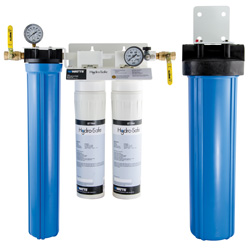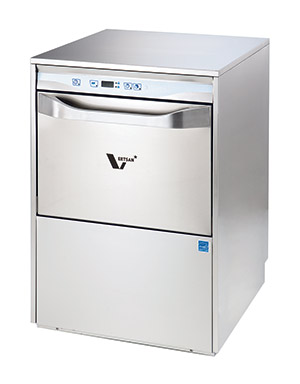Components of these units include removable upper and lower rinse arms, pump drains, detergent pumps, built-in temperature boosters for high-temp warewashers and sanitizing pumps on low-temp machines. Insulated doors, low-chemical alerts and delime alarms typically come standard. Some warewashers have digital controls on top that display water temperature and cycle information, while others can automatically extend the rinse cycle to ensure water reaches 180 degrees F.
Sanitation and Safety Guides
Thanks to oil-filtration systems, the days of kneeling in front of a fryer with a filter cone and a stock pot, anticipating the flow of boiling-hot oil, are over.
Situated over cook lines, ventilation systems remove cooking heat, effluent and odors.
Type I ventilation systems are grease rated for positioning over grease-producing appliances, including ranges, griddles, fryers and charbroilers. Type II or B units, also called vapor hoods, are designated to handle heat and steam over dishwashers and some oven types.
Oil is the most expensive food product in the kitchen. The customers buy products cooked in oil, and at the end of the oil life, operators recycle or throw away the used shortening. Filtering plays an important role in getting the most from an operation’s fryer oil.
Pizza restaurant dish rooms, like those in other foodservice segments, continue to shrink in size. These cramped spaces can be difficult environments for staff to work in as well as inefficient when ergonomics are an issue.
Service agent John Schwindt, general manager and vice president of operations at Hawkins Commercial Appliance Service Co., Englewood, Colo., shares a few tips on maintenance considerations for oil-filtration systems.


















